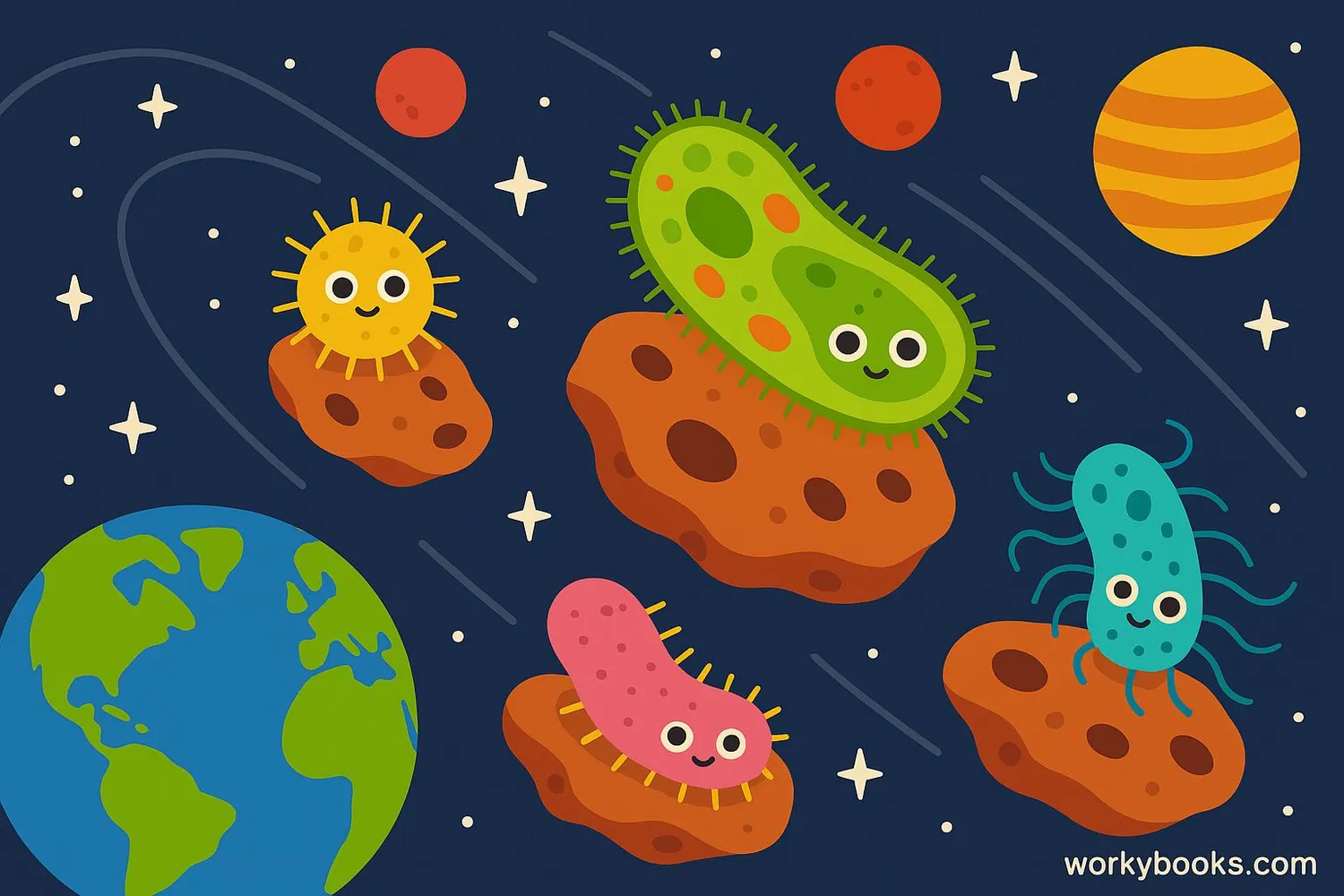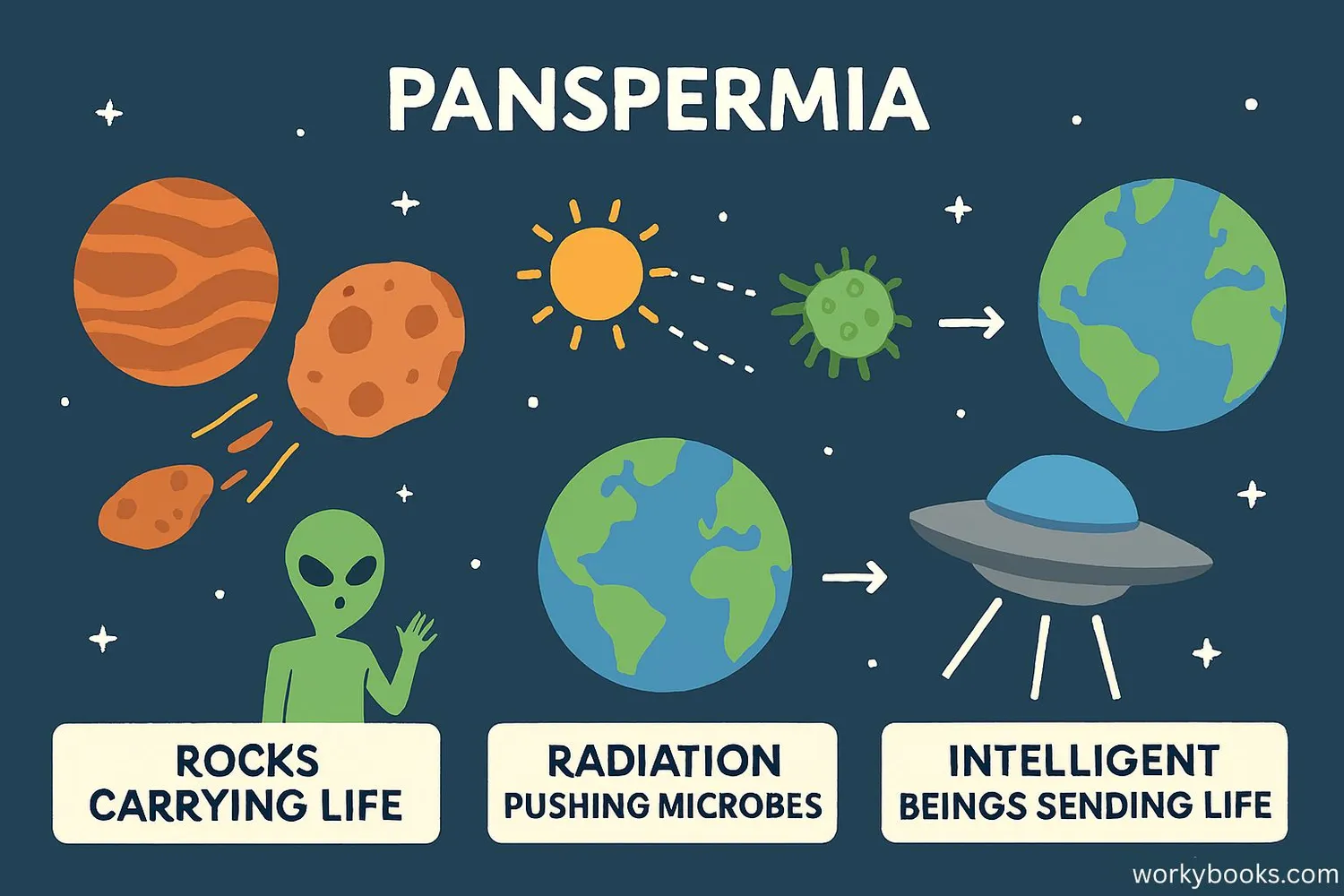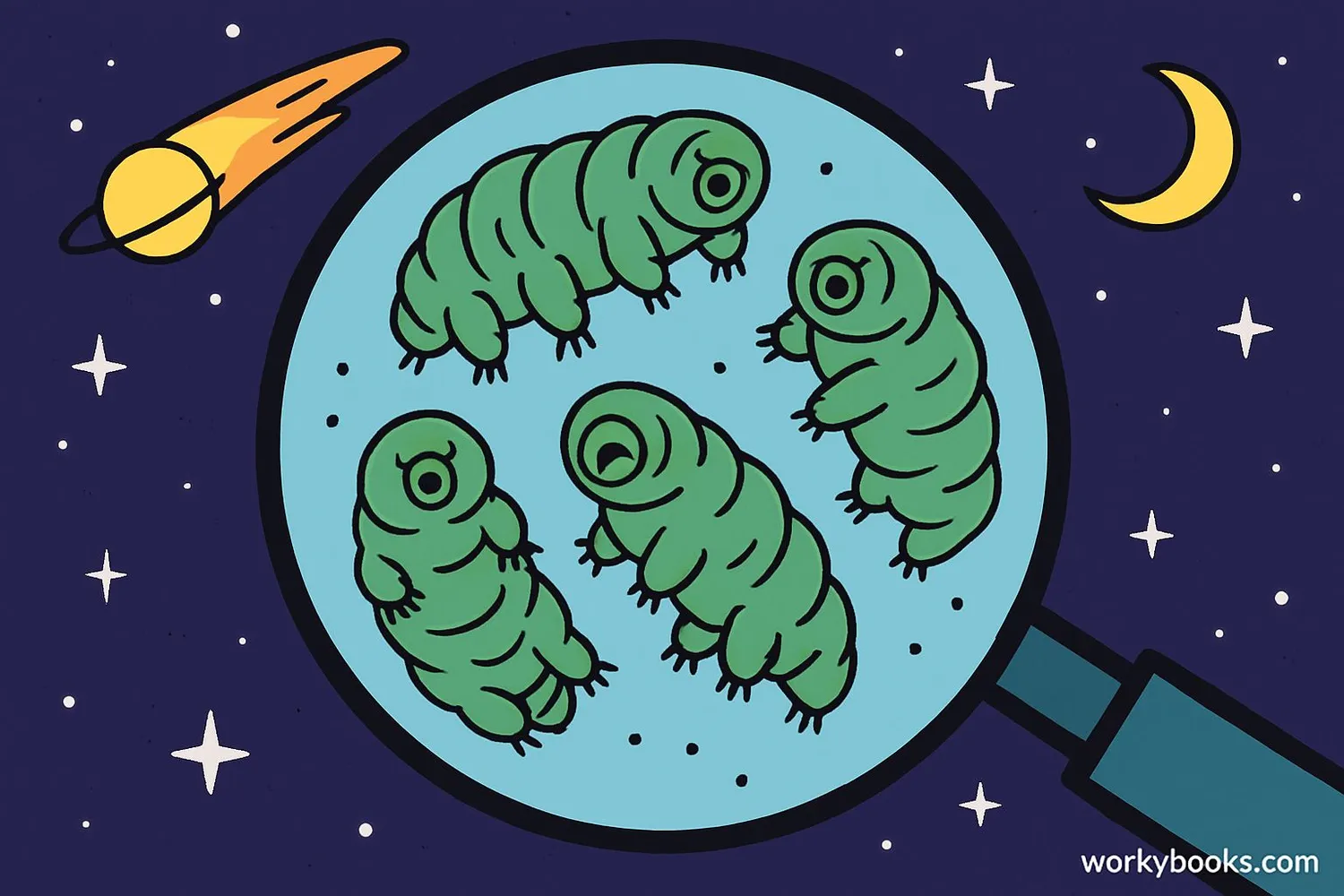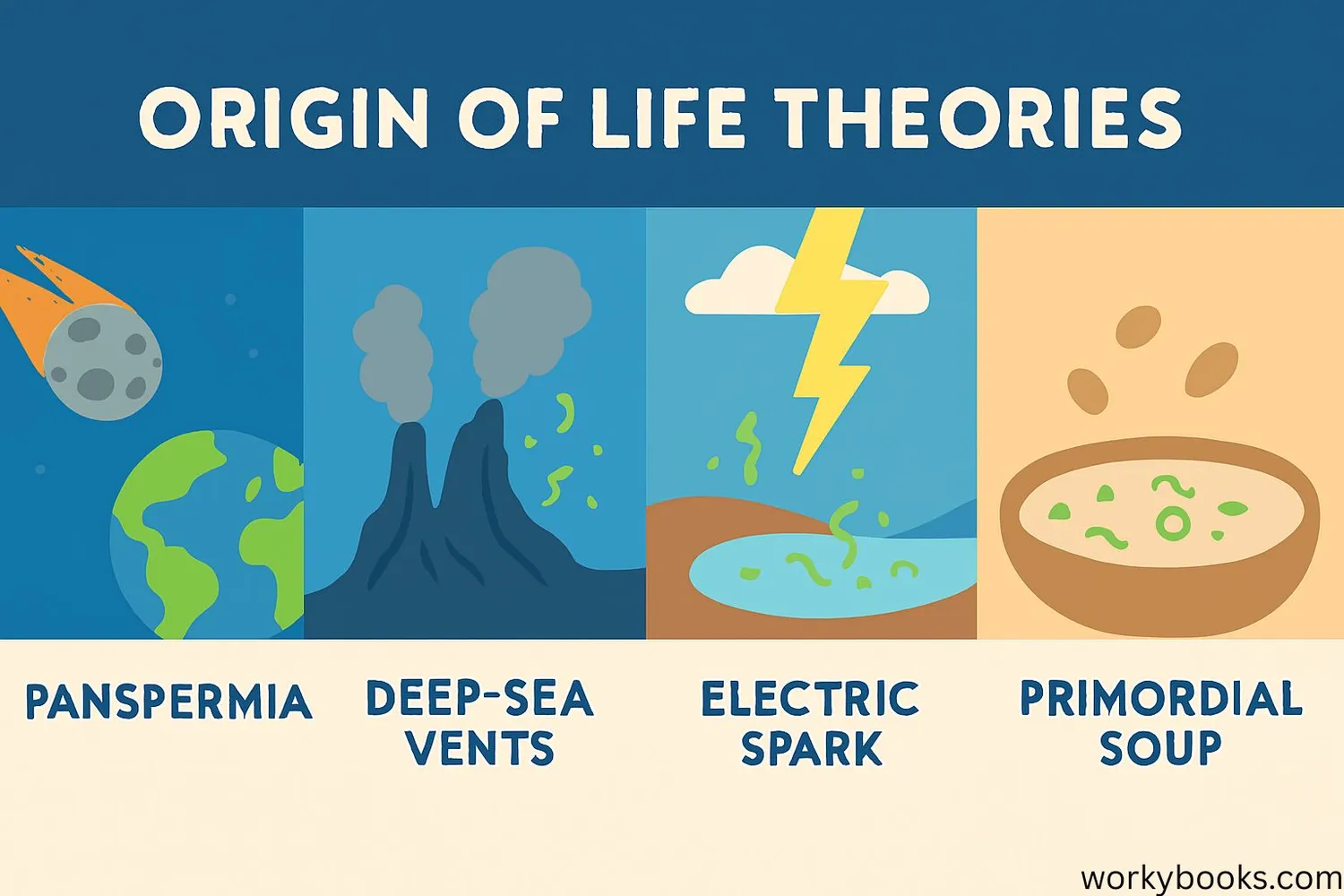Panspermia: Life's Cosmic Journey - Definition, Examples, Quiz, FAQ, Trivia
Discover how life might travel between planets through space!
What is Panspermia?

Panspermia is a fascinating scientific idea that suggests life might travel between planets! The word comes from Greek: "pan" meaning "all" and "sperma" meaning "seed." It's the theory that life exists throughout the universe and can be spread by space dust, meteoroids, asteroids, comets, and even spacecraft.
Imagine tiny life forms, like bacteria, hitching a ride on a space rock! These tough microbes could survive the journey through space and land on a new planet. If conditions are right, they might start growing and evolving into new forms of life.
Space Fact!
Some bacteria can survive for years in the harsh conditions of space! These are called extremophiles.
Types of Panspermia

Scientists have identified several ways that life might travel between planets:
Lithopanspermia
Life travels inside rocks blasted from one planet that land on another
Radiopanspermia
Tiny life forms are pushed through space by radiation pressure
Directed Panspermia
Intelligent life intentionally sends life to other planets
Pseudo-Panspermia
Only the building blocks of life travel, not living organisms
Lithopanspermia is considered the most likely by scientists. When a large meteor hits a planet, it can blast rocks into space. If those rocks contain hardy microorganisms, and they eventually land on another planet with the right conditions, life could take hold there!
Space Travelers!
We've found meteorites on Earth that came from Mars! Could they have brought Martian microbes to Earth?
Evidence & Theories

While we don't have proof that panspermia has actually happened, scientists have found evidence that makes it possible:
Tough Microbes
Tardigrades (water bears) can survive the vacuum of space, extreme cold, and radiation
Meteorite Evidence
Some meteorites contain organic molecules, the building blocks of life
Lab Experiments
Scientists have simulated space conditions and found bacteria can survive
The Miller-Urey experiment in 1952 showed that the basic chemicals of life could form naturally under conditions similar to early Earth. This supports the idea that life might form relatively easily if the right ingredients are present.
Extremophiles - organisms that live in extreme environments on Earth like deep-sea vents, acidic lakes, and frozen ice - show us that life can survive in conditions we once thought impossible. This makes the idea of life surviving space travel more believable.
Panspermia and the Origin of Life

Panspermia doesn't explain how life originally began - it just suggests how it might spread through space. Other theories try to explain how life first appeared:
Deep-Sea Vents
Life began around hot vents on the ocean floor
Electric Spark
Lightning created the building blocks of life
Primordial Soup
Life formed in a "soup" of chemicals in early oceans
The RNA World Hypothesis suggests that before DNA-based life, there was life based on RNA molecules. Panspermia could work with any of these theories - maybe life started somewhere else in space and then came to Earth!
Astrobiology is the science that studies life in the universe. Scientists in this field are searching for life on other planets and moons in our solar system, like Mars or Jupiter's moon Europa, which might have oceans under its icy surface.
Panspermia Quiz
Test your space science knowledge with this fun quiz about panspermia! Answer all 5 questions to see how much you've learned.
Frequently Asked Questions
Here are answers to some common questions about panspermia:
Space Science Trivia
Discover some amazing facts about space and the possibility of life traveling between worlds!
Space Travelers
Over 50 Martian meteorites have been found on Earth! The most famous is ALH84001, which some scientists believe might contain fossilized Martian bacteria.
Tough Tiny Creatures
Tardigrades can survive temperatures from -458°F to 300°F, the vacuum of space, radiation doses 1000 times what would kill a human, and decades without water!
Space Experiments
In 2007, scientists placed bacteria on the outside of a spacecraft for 18 months. When it returned, some bacteria were still alive!
Ocean Worlds
Jupiter's moon Europa and Saturn's moon Enceladus have oceans beneath their icy surfaces. If life exists there, could it have come from elsewhere through panspermia?


